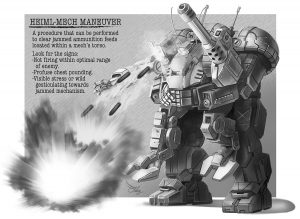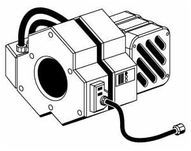PPC Capacitor
Sarna News

- Bad ‘Mechs - Sentinel
- HEXTECH Review - Wave 3 Brings More Urban Options To Your Battlefield
- Your BattleTech News Round-Up For March, 2024
- Crashing 'Mechs With Jennifer Brozek, Author Of The Rogue Academy Trilogy
- Getting The Word Out With Rem Alternis, Catalyst Community & Marketing Director
- Read more →
This article needs additional citations for verification. |

| |
| PPC Capacitor | |
| Production information | |
| Type | Energy (Direct Fire) |
| Tech Base | IS Experimental[1] |
| Year Availability | 3060 |
| Technical specifications | |
| Heat | 5 |
| Damage | +5 (Added to any type of PPC) |
| Minimum Range | N/A |
| Short Range | N/A |
| Medium Range | N/A |
| Long Range | N/A |
| Tons | 1 |
| Critical Slots | 1 |
| Ammo Per Ton | N/A |
| Cost (unloaded) | 150,000 C-bills |
| Ammo Cost (per ton) | N/A |
| BV (2.0) | PPC Capacitor+ Light PPC=132 Heavy PPC=370 PPC=264 ER PPC=343 SNPPC=252[2] |
Description
The PPC Capacitor is an extra component that can be added to any type of Inner Sphere Particle Projection Cannon. Its main purpose is to inflict more damage on an enemy in one shot. However, this comes at the expense of significantly raising the heat generated by each shot.
Rules
Game Rules
The Capacitor must be located in the same location as the PPC to which it is mounted. The Capacitor is required to be charged before firing. So long as the capacitor is charged, the next shot fired by the associated PPC deals an additional five damage and increases the heat generated from firing that weapon by five points. If the associated PPC is not fired by the end of the firing phase, the energy may be permitted to dissipate, generating no heat, or else retain the charge, generating another five points of heat. The associated PPC may not be fired on the same turn that the capacitor is charged. The PPC Capacitor is compatible with both standard and ER versions of the PPC.
Critical Hit effects: One critical hit to the Capacitor disables both the capacitor and the associated PPC, although the PPC is not considered damaged and may be rendered usable for combat with a five minute repair check at easy difficulty. Two critical hits to a PPC Capacitor renders it completely destroyed, and one hit causes a difficult repair job which costs 75% of the purchase price and takes three days of repair time.[citation needed]
Notes
- The Capacitor was used most famously by Precentor Berith of the Word of Blake's Manei Domini during his campaign against the Allied Mercenary Command and the new Black Widow Company. Berith's Archangel OmniMech became a feared sight on contested worlds in the Word of Blake Protectorate.[3]
References
- Maximum Tech (Revised), p. 83
- Starterbook: Wolf and Blake, p. 60
- Tactical Operations, pp. 336-337

